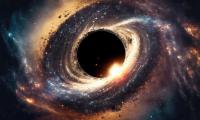TAMPA: A fresh look at data from a 1997 flyby of Jupiters moon, Europa, suggests that Nasas Galileo spacecraft flew directly through a watery plume, raising hopes of probing the jets for signs of life around the second planet from Earth.
The revelations on Monday came after scientists revisited a puzzling reading from an instrument aboard Galileo, which in 1995 became the first spacecraft to enter the orbit of a gas giant planet.
What they found was the most direct evidence yet of plumes emerging from Europas frozen surface, researchers reported in the scientific journal Nature Astronomy. Europa has long been thought to cover a salty ocean about twice the size of our planets.
Given the suspected abundance of warm, liquid water under its thick ice shell, the moon is considered a "top candidate" by Nasa for life on a solar system body other than Earth. In the last several years, Nasas Hubble Space Telescope has detected evidence of plumes on Europa, but from afar. Galileo came much closer during its 11 flybys of Europa.
"On one particular pass by Europa, the spacecraft came very, very close to the surface -- as I remember less than 150-km above the surface -- and it was on that pass that we saw signatures that we never really understood," said Margaret Kivelson, professor emerita of space physics at the University of California, Los Angeles, on Nasa TV.
That region was in an area where the Hubble Space Telescope had spotted repeated evidence of plumes.
When another researcher presented findings recently on Hubbles collection of observations, "that led us to realize we had to go back and look at Galileo data," said Xianzhe Jia, associate professor at the University of Michigan, Ann Arbor.
For the new study, experts measured variations in the moons magnetic field and plasma waves, based on data obtained during Galileos close flyby, and found they were "consistent" with the spacecraft crossing a plume.
Police said they arrested a 15-year-old male at the scene
Russian missile and drone attacks have pounded Ukrainian energy infrastructure since mid-March
More than half of all IDA countries are in Sub-Saharan Africa
Five of the six people he killed were women as were the majority of the 12 injured
Kejriwal is a fierce critic of Prime Minister Narendra Modi
Top Mumbai Police sources revealed that the attack was carried out by Rohit Godara







